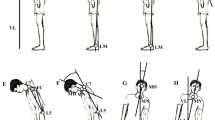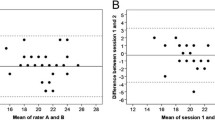Abstract
Background and aims: Parkinson’s disease (PD) is one of the most frequent neurodegenerative disorders characterized by bradykinesia, tremor at rest, and rigidity. Movement Time (MT) has been investigated in PD to evaluate bradykinesia and its levodopa-induced modifications. The Movement Time Analyzer® (MTA) is a simple, objective and reliable instrument to study MT, but no normative study has been reported to date. Methods: In a sample of normal subjects (n=68), we studied MT detected by MTA® in order to assess normative values, so that the MTA® could be used to evaluate patients with PD in daily clinical practice. Results: In normal subjects, MT progressively increased with aging, and was slower on the non-dominant side than on the dominant side. No differences were found between men or women. Conclusion: Our data provide further information about normative values on MT detected by MTA®, and indicate that age and handedness are the main variables influencing motor task performance.
Similar content being viewed by others
References
Marsden CD. Slowness of movement in Parkinson’s disease. Mov Disord 1989; 4 (Suppl 1): 26–37.
Wilson SAK. Disorders of motility and of muscle tone with special reference to the corpus striatum. Lancet 1925; 2: 1–10.
Zappia M, Montesanti R, Colao R, Quattrone A. Usefulness of movement time in the assessment of Parkinson’s disease. J Neurol 1994; 241: 543–50.
Quattrone A, Zappia M. Oral pulse levodopa therapy in mild Parkinson’s disease. Neurology 1993; 43: 1161–3.
Zappia M, Montesanti R, Colao R, et al. Short-term levodopa test assessed by movement time accurately predicts dopaminergic responsiveness in Parkinson’s disease. Mov Disord 1997; 12: 103–6.
Zappia M, Oliveri RL, Bosco D, et al. The long-duration response to L-dopa in the treatment of early PD. Neurology 2000; 54: 1910–5.
Quattrone A, Zappia M, Aguglia U, et al. The subacute levodopa test for evaluating long duration response in Parkinson’s disease. Ann Neurol 1995; 38: 389–95.
Zappia M, Colao R, Montesanti R, et al. Long-duration response to levodopa influences the pharmacodynamics of short-duration response in Parkinson’s disease. Ann Neurol 1997; 42: 245–8.
Zappia M, Oliveri RL, Montesanti R, et al. Loss of long-duration response to levodopa over time in PD: implications for wearing-off. Neurology 1999; 52: 763–7.
Zappia M, Bosco D, Plastino M, et al. Pharmacodynamics of the long-duration response to levodopa in PD. Neurology 1999; 53: 557–60.
Pollo A, Torre E, Lopiano L, et al. Expectation modulates the response to subthalamic nucleus stimulation in Parkinsonian patients. Neuroreport 2002; 13: 1383–6.
Kauranen K, Vanharanta H. Influences of aging, gender and hand-edness on motor performance of upper and lower extremities. Percept Mot Skills 1996; 82: 515–25.
York JL, Biederman I. Effect of age and sex on reciprocal tapping performance. Percept Mot Skills 1990; 71: 675–84.
Shimoyama I, Ninchoji T, Uemura K. The finger-tapping test. A quantitative analysis. Arch Neurol 1990; 47: 681–4.
Smith CD, Umberger GH, Manning EL, et al. Critical decline in fine motor hand movements in human aging. Neurology 1999; 53: 1458–61.
Hallet M, Khoshbin S. A physiological mechanism of bradykinesia. Brain 1980; 103: 301–14.
Author information
Authors and Affiliations
Corresponding author
Rights and permissions
About this article
Cite this article
Nicoletti, G., Arabia, G., Pugliese, P. et al. Movement time and aging: a normative study in healthy subjects with the “Movement Time Analyzer®”. Aging Clin Exp Res 17, 207–210 (2005). https://doi.org/10.1007/BF03324598
Received:
Accepted:
Published:
Issue Date:
DOI: https://doi.org/10.1007/BF03324598




